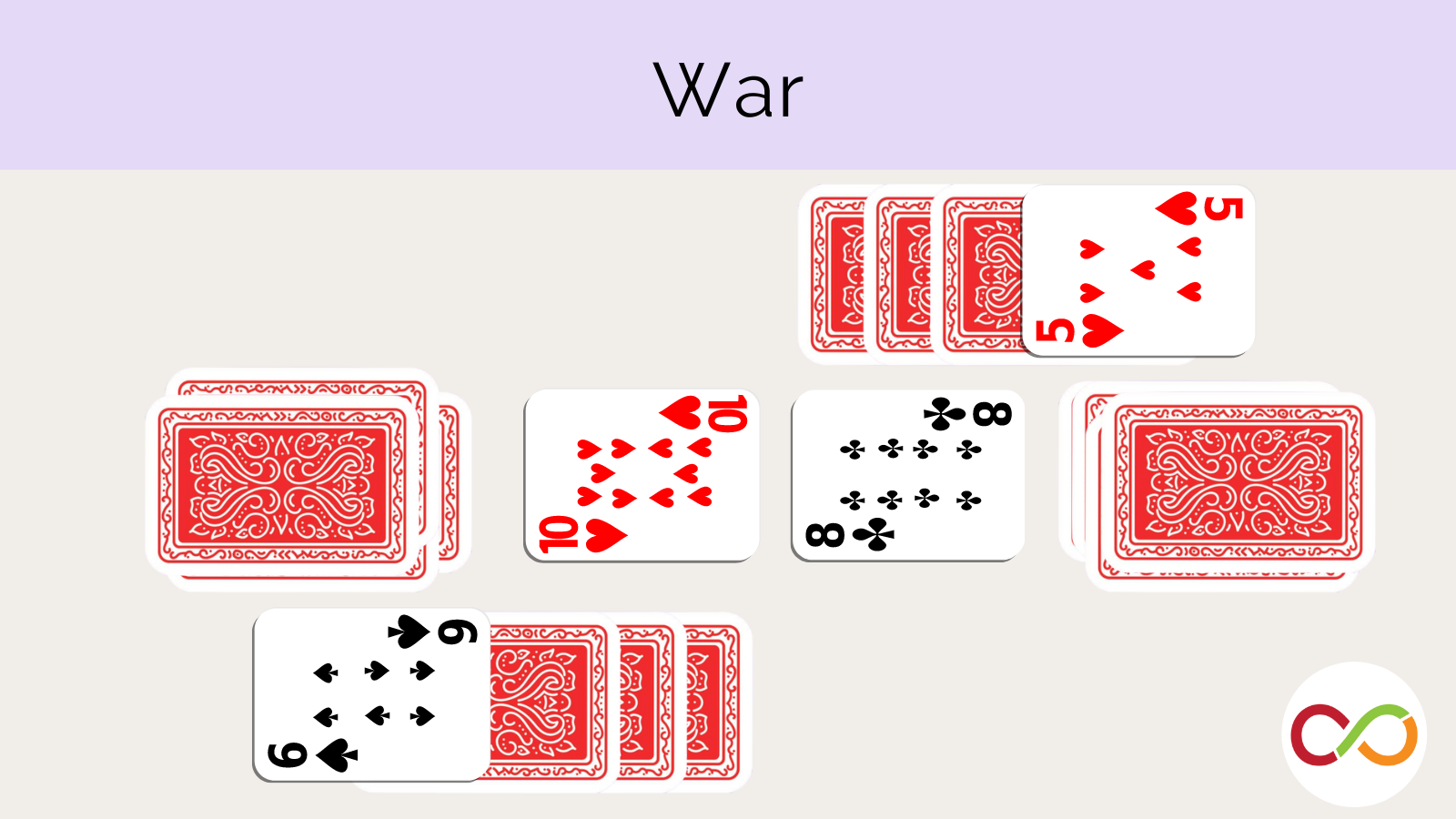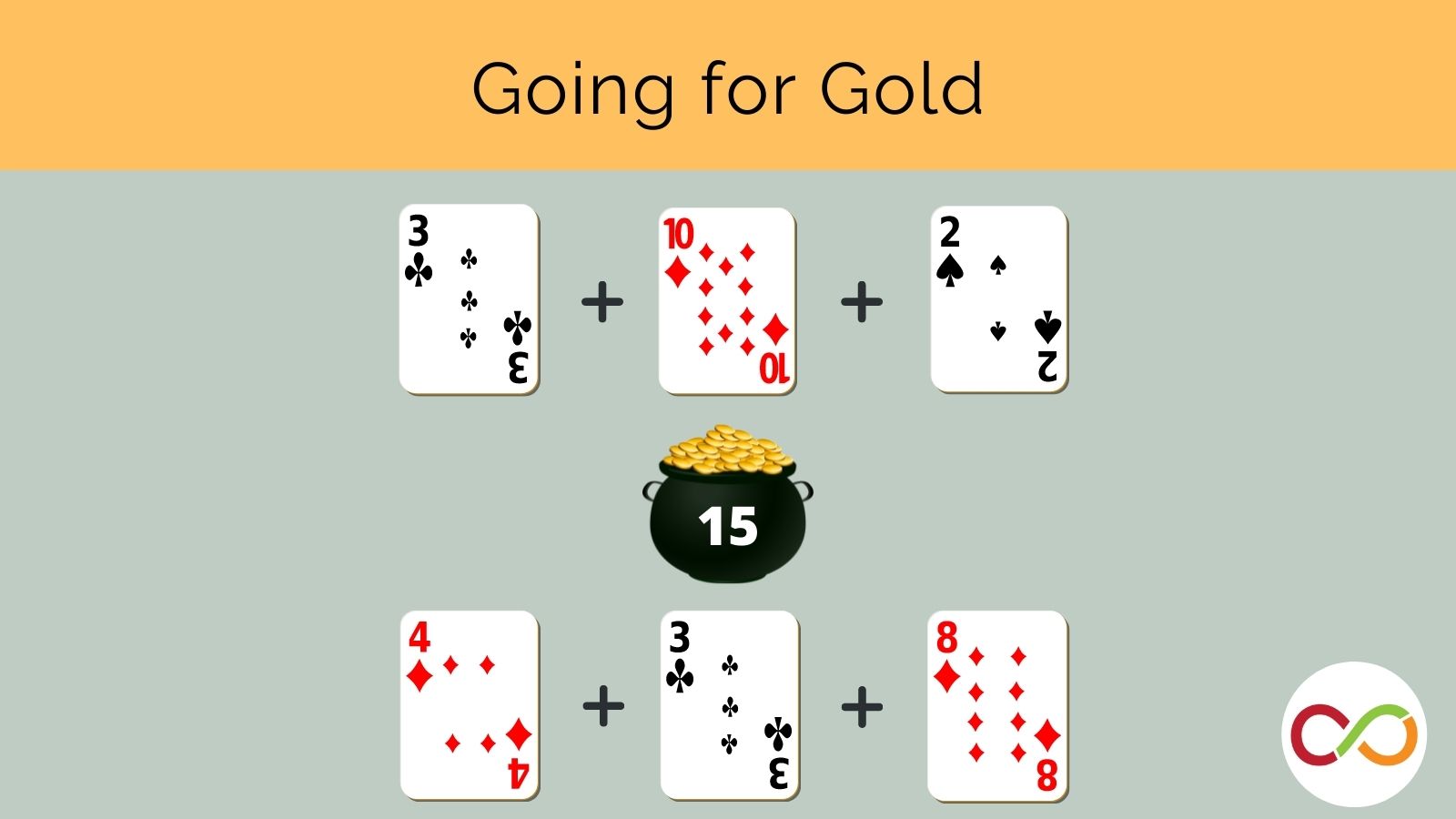Math in a Deck of Cards
In a past blog, we discussed the power of games to promote and reinforce mathematical thinking. As we head into this unusual holiday season a year later, it seems a good time to revisit some of these ideas, focusing on the myriad possibilities of a deck of cards.
The first playing cards appear to have originated in Tang dynasty China around the 9th century CE with the invention of woodblock printing; the card game craze rapidly spread through Asia, the Middle East, and North Africa. The first credible European mention occurs in Italy in 1377 in a diatribe against the moral evils of card-playing, after which an avalanche of bans across the European continent has been documented. Along with the unflagging popularity of card games over a millennium, there has arisen an entire field of scholarship devoted to every imaginable aspect – from sociology to aesthetics to symbolism – exemplified by a famous (to afficionados) 1000 volume collection at Vanderbilt University.
When we introduce children to a set of common playing cards, therefore, we induct them into a longstanding and wide-ranging cultural practice. As they first hover on the fringes then begin to join into multigenerational games within their extended family, children see themselves, not as recipients of another child-improvement lesson, but as emerging participants in a larger social and cultural enterprise. Like many traditional games, playing cards combine utter simplicity with limitless versatility; indeed, the versality inheres in the simplicity. The structure of a card deck with its numbered suits is founded upon mathematical principles, and most card games, from the most basic to the most complex, require and build mathematical reasoning. They offer opportunities for joyful repetition and extended practice with concepts at many levels, strategy development within rule-governed constraints coupled with the luck of the draw, and vicarious learning in a heterogeneous social setting. Most important, perhaps, children experience the motivating power of growing mastery in an engaging, playful context that matters to them.
Initially, for a young child, working memory demands as they learn the components of a game from scratch can be overwhelming, and the presence of a supportive adult may be essential, both to facilitate the implementation of rules and procedures and to make the math explicit at an appropriate level. As children become familiar with the common protocols and structures underlying most variants of card games, their ability to quickly and independently pick up new games develops rapidly. Adult facilitators sometimes straddle a fine line between providing support and exerting pressure. It’s generally advisable to tread lightly and take your cues from the child, ready to back off when mathematical probing is met with an indifferent shrug; to, at times, simply provide the information a child needs to move forward.
For the child, keeping the game going to its conclusion is the goal. When a young child with shaky numeral recognition tires of counting card pips to confirm a card’s value, an adult might move things forward by quickly modeling the counting or naming the value. Similarly, gauging whether to correct a mid-game miscalculation is a judgement call – if a child is consistently inaccurate, the game is too difficult, but the odd slip probably isn’t worth dwelling on. As teachers, we sometimes overestimate the benefits of constant challenge (or the wrong kind of challenge) in sustaining engagement or making an activity worthwhile. Yet there is also value in repetition of the tried and true. Mathematically expert adults continue to be challenged by games they know well; do we need to distract children mid-play with questions irrelevant to their own purposes? It is sadly easy to take the play out of play, and it may be preferable to set aside another time for instruction and allow the game to maintain its integrity, to proceed as a game.
Card games are endlessly adaptable, and a great deal of valuable support occurs indirectly, behind the scenes. Minor adjustments to the size of the deck, the numbers represented, or the end goal make most existing games accessible and engaging for most ages. For young children just learning about cards and how they work, for example, it can be helpful to remove the face cards or to white-out the extra small symbols beneath the numerals which confuse efforts to determine the card’s value through counting. Leaving cards visible rather than hidden helps an adult prompt a child more effectively. It also gives that child an overview that eventually helps them build a stronger awareness of relationships and strategy.
Games not only provide opportunities for scaffolding concept development, they also offer a wonderful chance to observe children’s thinking in action. While parents or older siblings may adapt standard games just enough to allow a younger child to enter into play, teachers will often tweak traditional card games in order to focus on a particular skill or meet specific curriculum goals. Constance Kamii, a staunch advocate for the use of play and games in mathematical learning, offers acutely detailed analyses of children’s math reasoning through a Piagetian lens. Two of her books, Young Children Reinvent Arithmetic: Implication of Piaget’s Theory, Grade 1 (2000) and Young Children Reinvent Arithmetic: Implication of Piaget’s Theory, Grade 2 (2004), describe year-long collaborations with Grade 1 and 2 teachers whose numeracy curricula were entirely based in modifications of classic card games. Post-testing showed the children in the card games classrooms to surpass those taught more traditionally in all numeracy areas, including rapid calculating. One useful chapter summarizes each game in detail; a more recent piece (Kamii, 2015) describes by grade level some mathematically valuable card games she has adapted for children in Kindergarten to Grade 3. An article written with colleagues (Kato, Y., Honda, M., & Kamii, C., 2006) analyzes with meticulous precision the different thinking levels engaged in by kindergarten children as they play a teacher-created card game. It beautifully shows how observing and listening to children as they play provides a window on their understanding.
Confirming the value of card play in mathematical learning, other researchers in math education have also offered lists and descriptions of developmentally informed card games. Some useful resources include a family card booklet for children aged about 4-7 compiled by the DREME (Development and Research in Early Mathematics Education) group at Stanford University. Along with instructions for playing each game, it systematically spells out developmental guidelines for selecting and adapting them. Enticing games that will appeal to older children can be found on the Math Engaged website, as well as in the Nrich collection of math games and activities.
Card Game Resources
Classic Games Used in Online Playful Math
War

Closest To

Going for Gold
